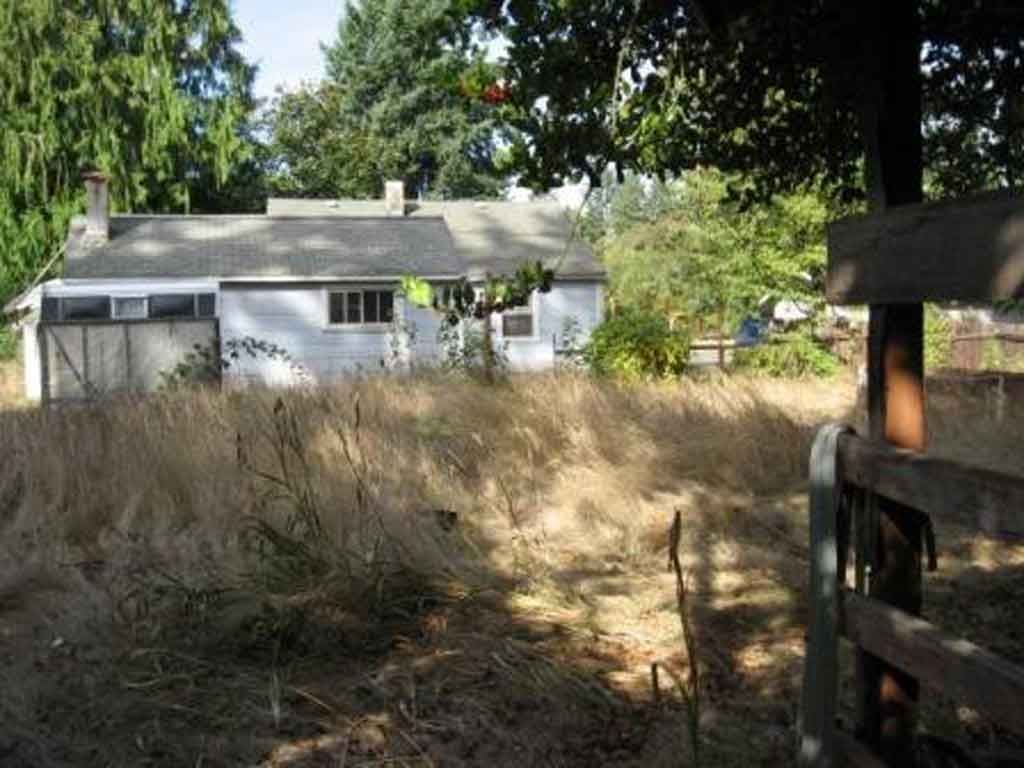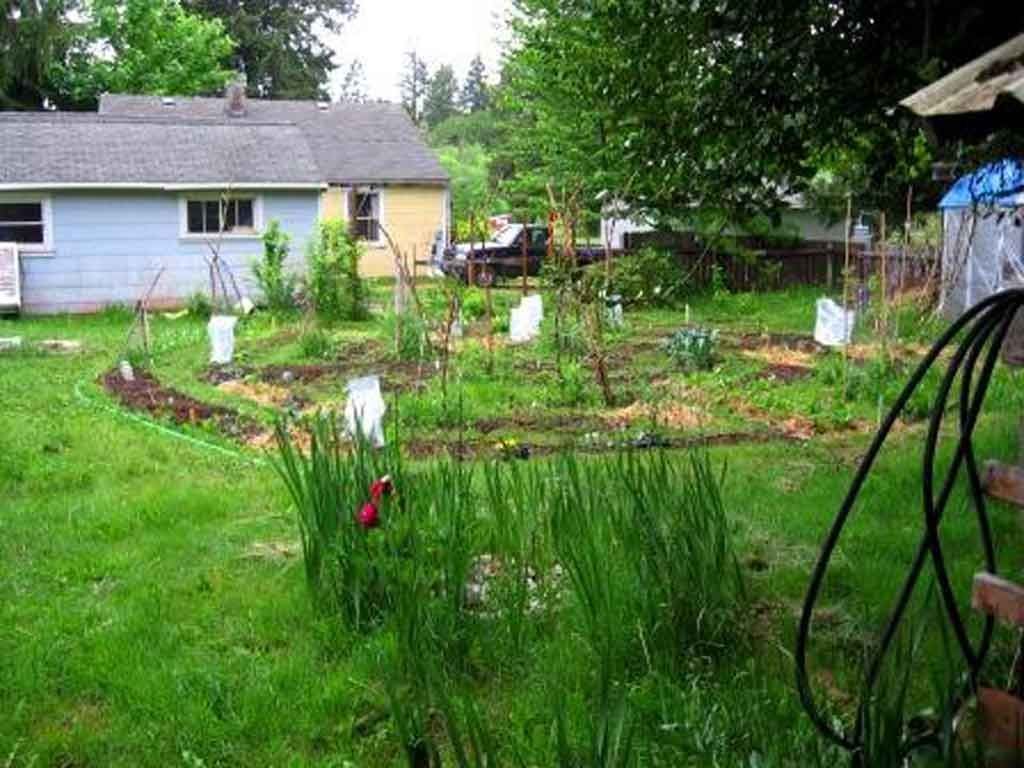The Lazy Gardener
(Introducing Cathy McGuire's new blog, "The Lazy Gardener")
Although I am an avid gardener, I confess that I am always looking for the ways that involve less physical work, less maintenance, less time and effort. That probably makes me a natural for permaculture. I haven’t taken a course, and I would be the last person to call myself an expert on any kind of gardening, but I wanted to share my experience with those people who feel perhaps that they can’t do it unless they do it hundred percent.
What I have been doing is jumping in on the things that I can do, observing my yard to see how things happen naturally, and looking to find ways that I can work with my environment, rather than against. I think it has worked fairly well, and in the six years that I’ve lived here, my yard has evolved to be very productive, where before there was nothing but tall grass.
This was the backyard when I moved in.

I confess to be very envious of those permaculture Gardens look neat, tidy, picturesque. Mine kind of looks like a drunken bird nest. However, I have seen many happy accidents happen because I have left things as they are. For example, last year I had been puzzling about a very fuzzy rosette of large leaves in my garden, and finally decided to just leave it and find out what it was – it turned out to be Great Mullein, which is a biennial, so I did not get to see the signature stock until the second year. Also, because I tend to leave things until I find out why I need to move them, I have had many volunteer vegetables end up doing very well in the garden.
This was one year later.

One of the things about permaculture, I think, is that it takes quite a while to learn what your particular yard needs and wants. It takes a lot of observation, and trying things out. Now, I expect that experts would probably be able to look through my yard and perhaps in one year do a makeover that would be extremely helpful. But, I learn best from experience, and so the lessons that are sinking in are the ones where I have either made mistakes, or have managed by intuition or luck to find the right combinations. I have tried writing things down, I have tried being organized (I have an unorganized person’s passion for organization) but over and over, what happens is my good intentions fall by the wayside, and that I’m back to observing and responding.
For example, when I planted my hops, I know I had read all about them, including each of the different types that I planted. However all of that seem to fall out of my mind, and it wasn’t until I watched them grow, and die back, and then saw where the new sprouts came from the next year, that I understood it was a rhizome rather than a vine. Now, when I read about hops, the image of what I have experienced comes up, and I am better able to remember the written instructions.
Another example: I read somewhere that comfrey as a companion plant helps fruit tree saplings. Well! I had lots of “volunteer” comfrey, so I dug up a couple and planted them near some saplings, and now I’m able to see whether it helps those… so far, it does look like those near comfrey plants are getting taller faster.
All this is a long, roundabout way of encouraging those who do not feel they have the experience, or the best circumstances, to just “go for it.” Start where you are, start with one or two things that you will enjoy seeing results on (my family is still pretty much stuck on growing tomatoes, because that’s what they eat a lot of). Branch out once you’ve gotten a sense of what is working. Expect to make a lot of mistakes. Don’t be afraid to use your intuition and try something that’s not in the book. Be grateful that we have the time to learn, that growing is not a flat out survival requirement, and start your learning curve now!
I will be posting more examples, and more resources for you to jump in and try things the “lazy gardener” way.
Cathy